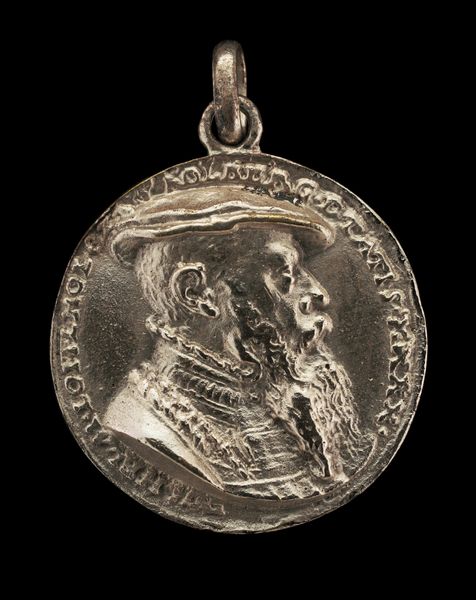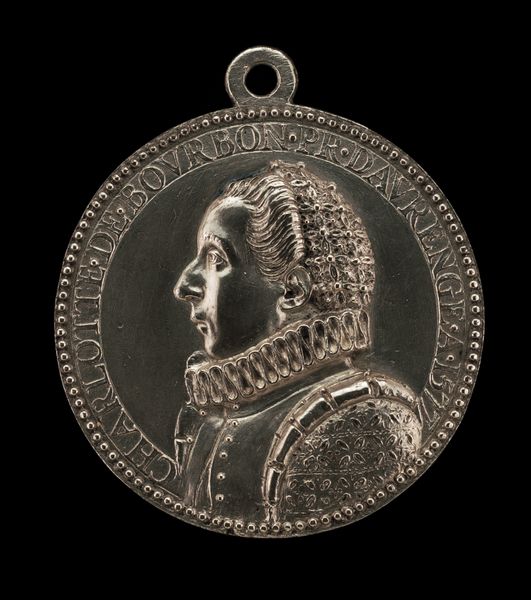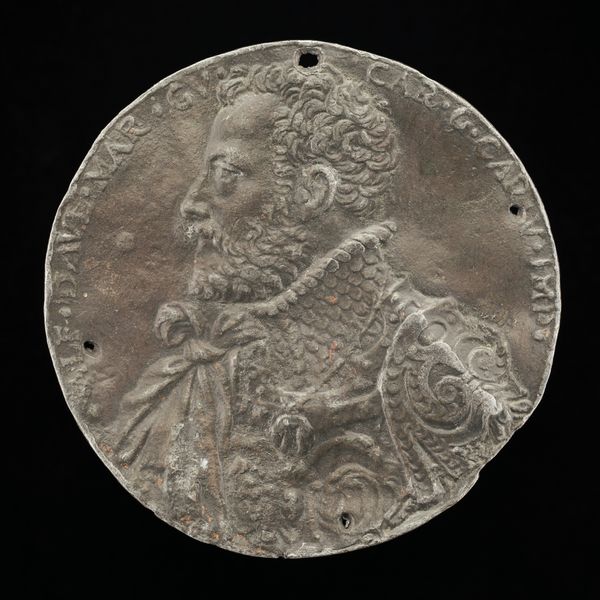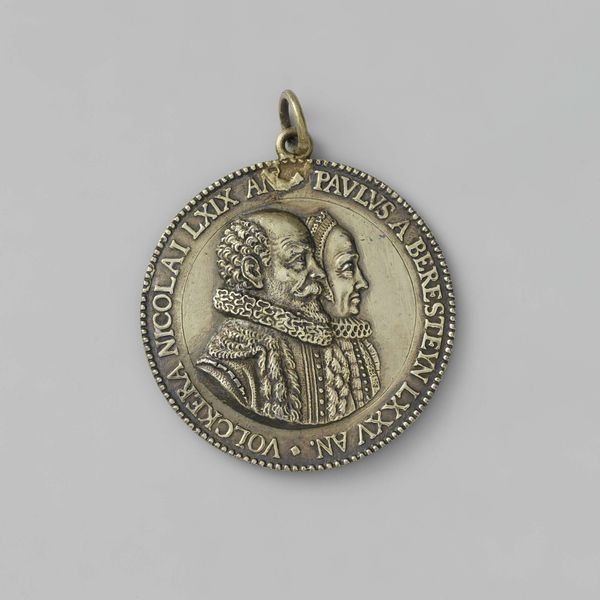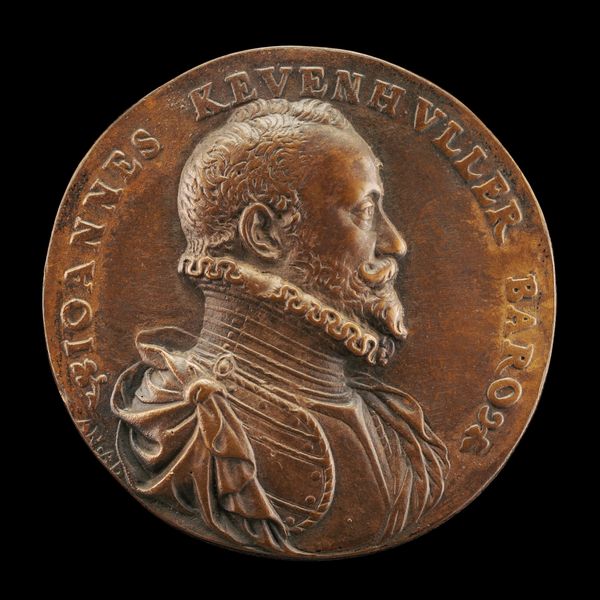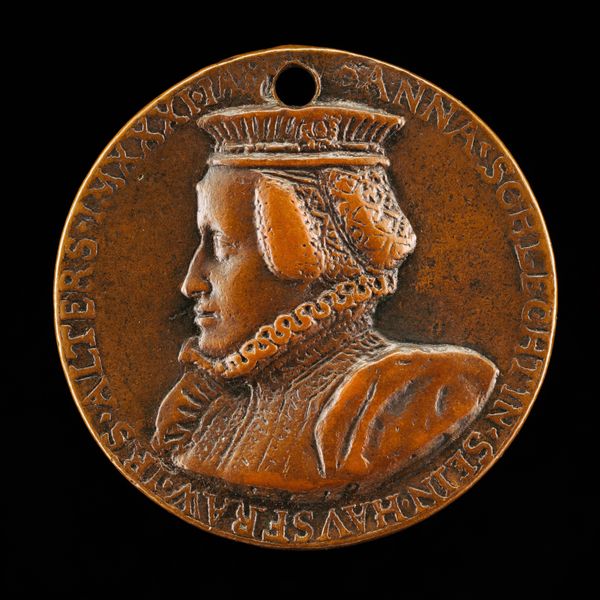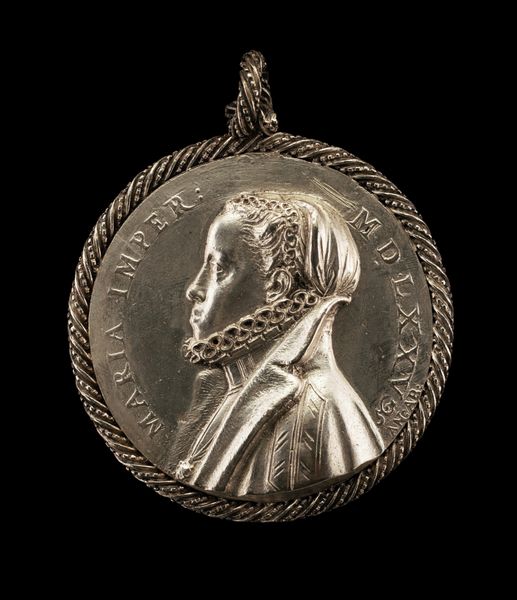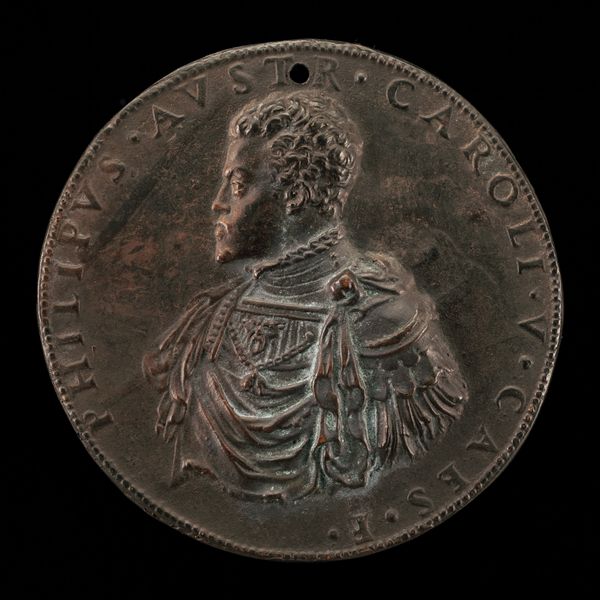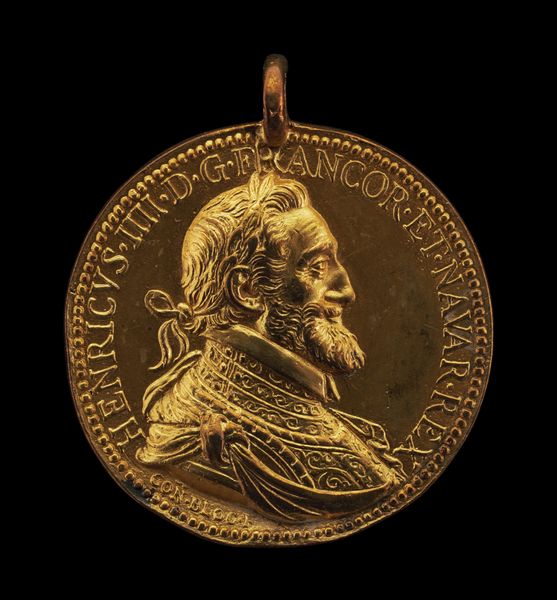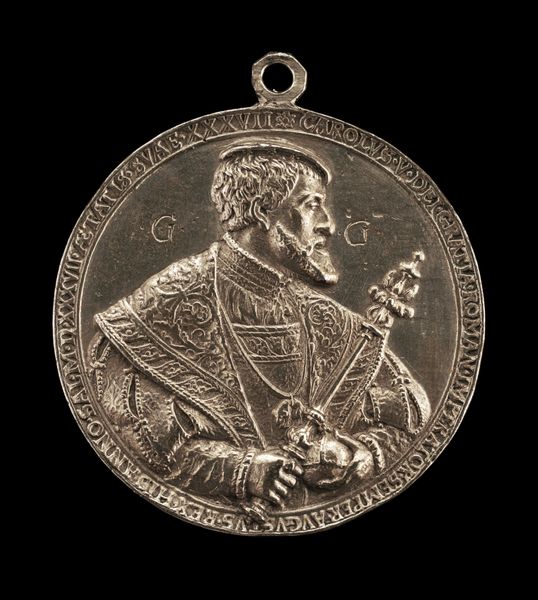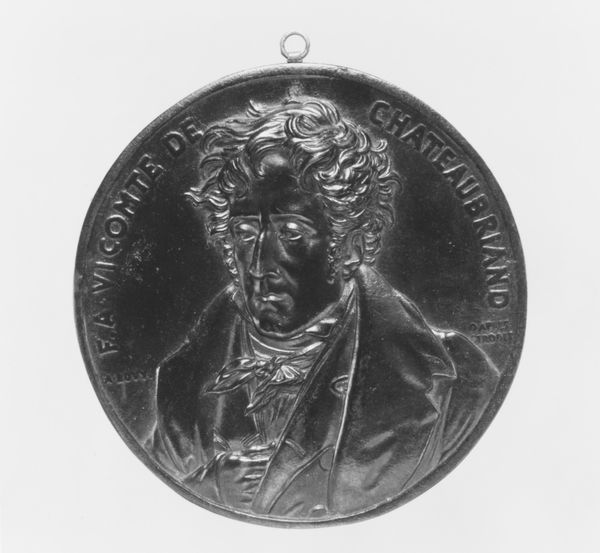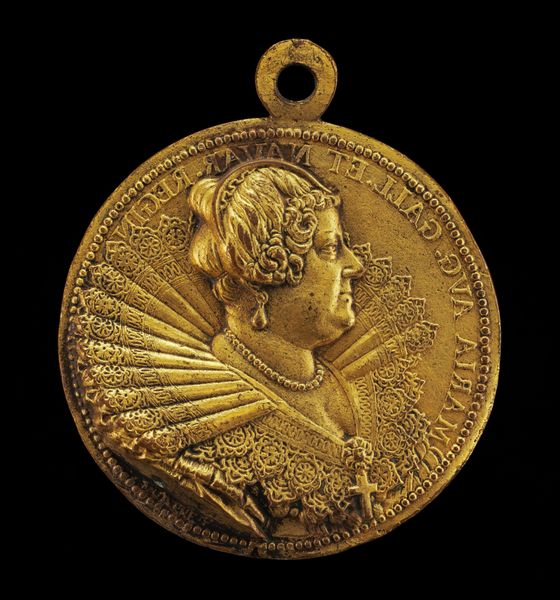![Rudolph II, 1552-1612, Holy Roman Emperor 1576 [obverse] by Antonio Abondio](/_next/image?url=https%3A%2F%2Fd2w8kbdekdi1gv.cloudfront.net%2FeyJidWNrZXQiOiAiYXJ0ZXJhLWltYWdlcy1idWNrZXQiLCAia2V5IjogImFydHdvcmtzLzYwMTlmNjdjLTRmZjktNGUyMC1iZDc3LTZhYzViZTRlMjRlMi82MDE5ZjY3Yy00ZmY5LTRlMjAtYmQ3Ny02YWM1YmU0ZTI0ZTJfZnVsbC5qcGciLCAiZWRpdHMiOiB7InJlc2l6ZSI6IHsid2lkdGgiOiAxOTIwLCAiaGVpZ2h0IjogMTkyMCwgImZpdCI6ICJpbnNpZGUifX19&w=3840&q=75)
Rudolph II, 1552-1612, Holy Roman Emperor 1576 [obverse] c. 1577
0:00
0:00
carving, metal, relief, sculpture
#
portrait
#
medal
#
high-renaissance
#
carving
#
metal
#
sculpture
#
relief
#
11_renaissance
#
sculpture
Dimensions: overall (height with suspension loop): 5.59 cm (2 3/16 in.) overall (diameter without loop): 4.58 cm (1 13/16 in.) gross weight: 27.39 gr (0.06 lb.) axis: 12:00
Copyright: National Gallery of Art: CC0 1.0
Antonio Abondio crafted this silver medal of Rudolph II, Holy Roman Emperor, sometime between 1552 and 1612. The Emperor's profile, encircled by text, presents a fascinating study in power and representation. Note the Emperor's armour. This motif, intended to project strength and authority, echoes the classical Roman cuirass, a symbol of military might and imperial power. Yet, the ruff around his neck hints at the changing times, a nod to the fashions of the Renaissance court. This juxtaposition is not unique; we see similar blends of classical and contemporary symbols throughout history, each reflecting the ruler's attempt to legitimize power by connecting it to the past. Consider how portraiture, from ancient coins to Renaissance medals, functions as a form of collective memory. Each image imprints itself upon the cultural consciousness, shaping our understanding of leadership, legacy and the cyclical dance of history.
Comments
No comments
Be the first to comment and join the conversation on the ultimate creative platform.

